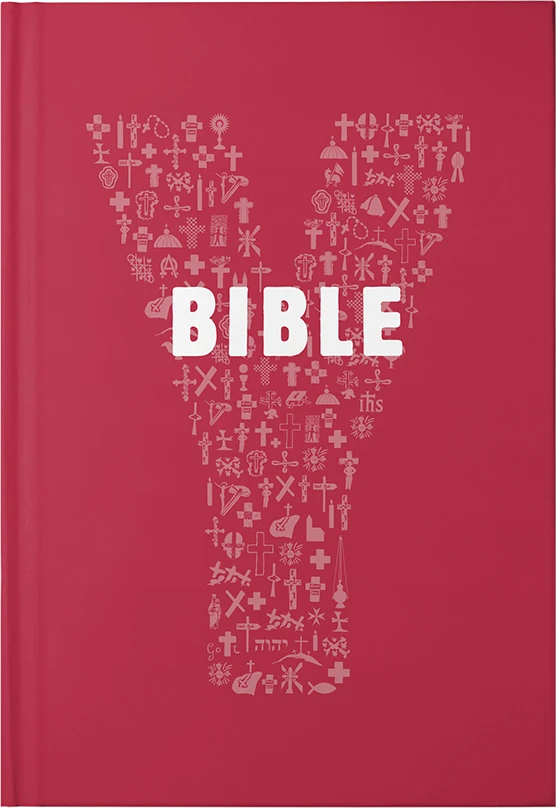

Credopedia
How do you read the Scriptures?
For many people, the Holy Scriptures are a book with seven seals. It is not a unified work, but a collection of writings that were created over the course of about 1500 years and compiled in the form we have.
What is it?
For many people, the Holy Scriptures are a book with seven seals. It is not a unified work, but a collection of writings that were created over the course of about 1500 years and compiled in the form we have. The Bible can be read from many different points of view. For some, it is a historical document that accompanied the history of Israel and the history of a sectarian schism later called Christianity. For others – Jews and Christians alike – it is the Word of God. Christians, however, know (as YOUCAT 14 says): “The Bible did not fall from heaven ready-made, nor did God dictate it to human writing machines. Rather, God ‘chose men to write it, who, by the use of their own abilities and powers, were to serve him in handing down in writing all that, and only that, he wanted written, as true authors’. (Second Vatican Council, DV 11)” Because Sacred Scripture is inspired by the Holy Spirit, it cannot be read without the Holy Spirit, and not without the question: ‘What does God wish to communicate to us in this Word?’. “The Holy Scriptures,” says YOUCAT 16 “are read correctly when they are read prayerfully, that is, with the help of the Holy Spirit, under whose influence they came into being. It is the Word of God and contains the decisive communication of God to us.”
What does the Holy Bible say?
Christianity is not a book religion, as highly as it values the Word. Nor does the actual Word of God consists of 4,410,133 letters. The ‘Word’ par excellence is Jesus Christ. He is the one of whom it says in the Prologue of John: “In the beginning was the Word, and the Word was with God, and the Word was God” (Jn 1, 1-2). This Word did not become a book, but ‘flesh.’ Nevertheless, the many words of the Holy Scriptures are extremely precious; one must not misunderstand them as if one could find in them instructions on how to cook properly or heavenly tips on how to organise road traffic. It is in the 738,765 words of Scripture that the authentic and unsurpassable testimony of the one Word of God takes place. Appreciation is expressed when the second letter to Timothy says: “…you have known from childhood the holy Scriptures, which are able to make you wise for salvation through faith in Christ Jesus. Every scripture, being inspired of God, is also profitable for instruction, for reproof, for correction, for training in righteousness; that the man of God may be equipped, fitted for every good work” (2 Tim 3, 15-17).
From the beginning of the Church, the Scriptures have been read primarily in worship. In memory of Matthew 4,4 (“Man does not live by bread alone, but by every word that comes from the mouth of God”), the liturgy was divided into a liturgy of the Word and a liturgy of the Eucharist. The link between the two parts is the sermon, which always deals with the parable of the sower: “On good soil is the seed sown with him who hears the word and also understands it; it bears fruit – a hundredfold or sixtyfold or thirtyfold” (Mt 13,23). So the question, “How do I read the Bible right?” would have to be supplemented by the question, “How do I hear the Word of God right?” Christians hear and read the Holy Scriptures by having a word from the letter of James in their ear: “But become doers of the word and not hearers only, otherwise you deceive yourselves!” (Jas 1,22) Meister Eckhart made a powerful dictum out of this: “One living master is better than a thousand reading masters.”
A short YOUCAT-Catechesis
Take and read!
If smartphones had existed at the time of Augustine of Hippo (354-430), we would have plenty of selfies of him. The young Algerian was intelligent, quick, yet wholely self-referential. From the North African province, he had gone where it was hip – to Milan. There he took on a cool teaching job in rhetoric. Today one would say: he trained copywriters. Augustine experimented with himself and with Manichean esotericism; he was interested in sex and had a child with a life partner.
In his early 30s, the death of a friend plunged him into a deep life crisis. Augustine recorded this turning point: “Without knowing how, I threw myself on the ground under the fig tree and let my tears run free, … I cried out: ‘How much longer? How much longer? Tomorrow and again tomorrow? Why not now?’ … Thus I spoke and wept with the greatest bitterness in my heart. Then I heard from the neighbouring house the voice of a boy or a girl repeating in a singing tone: ‘Take and read, take and read!’ …
Take and read!
Then I pushed back my tears and stood up, unable to think of any other explanation than that a divine voice was commanding me to open the Holy Scriptures …. I reached for the book, opened it and read silently to myself the paragraph on which my eyes first fell: ‘Let us live honourably as in the day, without immoderate eating and drinking, without fornication and debauchery, without strife and jealousy! Rather, put on the Lord Jesus Christ’ (Rom 13, 13-14). I did not want to read any further, there was no need; for at the conclusion of these words the light of peace came over my heart, and . the shadows of doubt fled away.” So says the eighth chapter of the “Confessions,” probably the most important book ever written by a Christian after the Scriptures.
Until then, Augustine was a freeloader of life. He took what he could get. The spiritual world only interested him where he could suck honey from it for his advancement or self-exaltation. And that was how he dealt with people. Suddenly, however, he felt confronted, recognised, seen through. End of the big show! He knew he had to give his life a completely different twist. From that accidental moment on, a tremendous dynamic came into the young intellectual’s life. He was baptised and actually put on Christ like putting on some new clothes. He didn’t just feel reborn. He was born anew.
Augustine, who until then had juggled a thousand books, focused on the one book that had confronted him with his life’s lies and at the same time opened the door to another life for him. He gave this book the chance to get to know it better: “If you believe what you like in the Gospels and reject what you don’t like, you don’t believe in the Gospel, you believe in yourself.”
A book that grows with you
There are books that grow smaller with the years – children’s books, novels for young people that you were once enthusiastic about – and those that seemed brittle at first, that you only discover at second glance. And there are those that grow larger with the years, indeed that prove inexhaustible. One such book is the Bible. And this is how Augustine experienced it: “The Bible is written in such a way that beginners mature on it, but its meaning grows along with them.” Or in another place: “The Holy Scriptures are like water in which a lamb can wade and an elephant can swim.” One has never finished reading the Bible; and even the great atheist and playwright Bert Brecht once confessed, when asked about the book of his life: “You’ll laugh – the Bible!” Brecht probably delighted in the plump life of the Holy Scriptures. Augustine found eternal life in it. And he testified, “When you read the Scriptures, God speaks to you.” With some strong words, Pope Francis recommended the Holy Scriptures to young people; he said, “You hold something divine in your hands! A book like fire! A book through which God speaks!” His predecessor, Pope Benedict, advised them, “Meditate often on the Word of God, and allow the Holy Spirit to be your teacher. Then you will discover that God’s thoughts are not those of men; you will be led to contemplate the true God and to read the events of history through his eyes; you will taste in fullness the joy that springs from the truth.”
Science can help …
Scientific biblical interpretation can help to better understand the circumstances of the times and the literal meaning of biblical texts. But anyone who expects to be able to bottle up the meaning of these texts or bottle them up in objective books will be disappointed. On the other hand, anyone whose ears have been opened just once because a verse of a psalm or a word of Jesus has touched him head-on, anyone who has once felt: this is said to me, exactly into my situation, – will never again think of the Word of God as a dead ancient cultural treasure. He will agree with the great Danish philosopher Sören Kierkegaard when he says: “The Bible is God’s love letter to us,” and it is “not there for us to criticise, but for it to criticise us.” “Therefore,” says YOUCAT 16, “I must receive the Holy Scriptures with great love and reverence: First, it is necessary to read the letter of God truly, that is, not to pick out details and disregard the whole. I must then interpret the whole in terms of its heart and mystery: Jesus Christ, of whom the whole Bible speaks, including the Old Testament. So, I am to read the Holy Scriptures in the same living faith of the Church out of which they arose.”

YOUCAT Digital
Discover our digital products, which will help you to grow in faith and become missionaries yourself.






